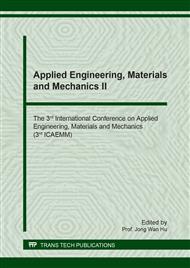p.106
p.113
p.118
p.123
p.128
p.133
p.138
p.145
p.152
Synthesis of Graphene Functionalized Melamine and its Application for Supercapacitor Electrode
Abstract:
In this work, we describe the development of graphene as energy storage materials that are supercapacitors. Melamine is successfully used as a Nitrogen source for graphene doping by simple reflux process. The influence of reducing agent ratio is also investigated to study the degree of reducing of graphene functionalized melamine on capacitive behavior. At reducing agent/graphene ratio of 1:1, the nitrogen functional graphene can deliver the highest specific capacitance of 333.38 F/g at 10mV/sec, which is much higher than that obtained from bare graphene. The increasing of reducing agent ratio higher than 1 tends to decrease the capacitive values of graphene functionalized melamine confirming the efficiency of doped Nitrogen content on graphene. This N-doped graphene feature can be viewed as the potentially ideal candidate materials for supercapacitor application.
Info:
Periodical:
Pages:
128-132
Citation:
Online since:
July 2018
Authors:
Keywords:
Price:
Сopyright:
© 2018 Trans Tech Publications Ltd. All Rights Reserved
Share:
Citation:


